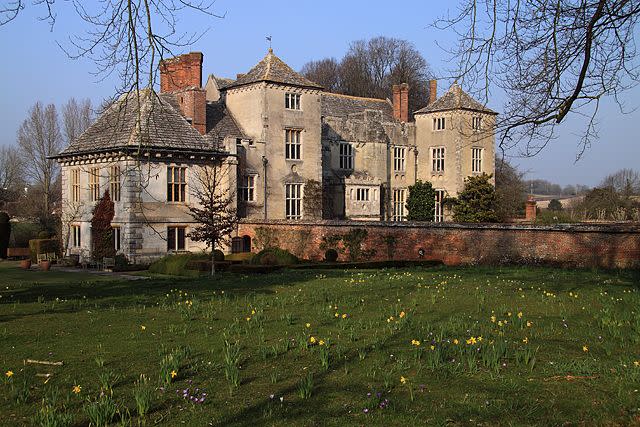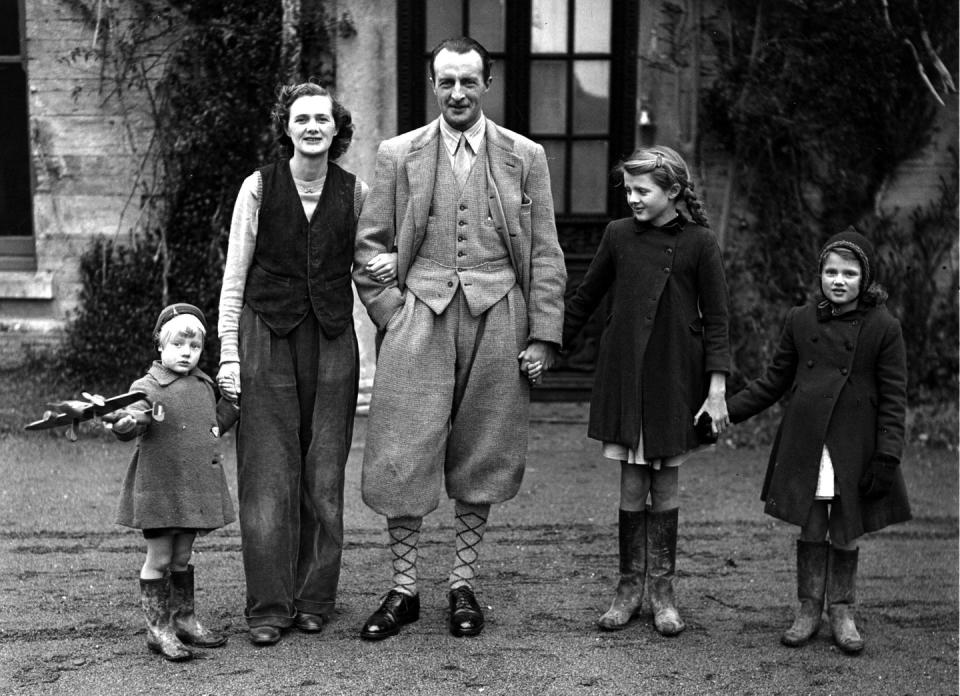"Rebecca's" Manderley Is Based on a Real English Seaside Manor

Daphne DuMaurier's classic gothic novel Rebecca takes place in Manderley, Maxim DeWinter's impressive estate.
Manderley isn't real, but the house was partially inspired by Menabilly, a historic estate in Cornwall that du Maurier refurbished.
The upcoming Netflix adaptation of Rebecca was filmed in real English manors like Hatfield House and Cranborne Manor.
Last night I dreamt I went to Manderley again. So begins Daphne du Maurier's enthralling 1938 novel Rebecca, about a young woman who meets, and marries, a wealthy older widower while in Monte Carlo, only to discover the secrets still lingering in his home. One of the most famous opening lines in English literature, the words indicate the importance of Manderley, Maxim DeWinter's estate on the western coast of England, has in the novel.
Manderley isn't real—but given the lingering presence it has in pop culture, it might as well be. At its core, Manderley is an innovative play on the haunted house. Years after the events of the novel, Manderley haunts Rebecca's unnamed protagonist, just as Rebecca, Maxim's first wife, haunts the inhabitants of Manderley.
While du Maurier devotes gorgeous prose to describing the house, the recent Netflix movie adaptation had to show Manderley. Here's what you need to know about Manderley, and the movie's filming locations.
Netflix's Rebecca was filmed at multiple English manors, including Cranborne Manor.
Pro tip: If you're planning a 2020 Rebecca set visit, don't type "Manderley" into Google Maps. According to director Ben Wheatley, Rebecca was filmed at about five historic houses in England. "We brought together the best bits of as many houses as we could get to," Wheatley said at a press junket.
One such house is the impressive Cranborne Manor, located in Dorset. Cranborne provides the exterior for Manderley's first reveal in the movie. Initially built as a hunting lodge for King John in 1207, Cranborne is one of the oldest surviving domestic buildings in England. Though Cranborne was remodeled in the 16th century, the original walls remain in some places.

Other filming locations include the 400-year-old Hatfield House in Hertfordshire, and Mapperton House in Dorset, home to the Earl and Countess of Sandwich. While we may not be able to visit Manderley, these privately owned homes are open to the public.
A post shared by Mapperton House & Gardens (@mapperton_estate) on Aug 4, 2020 at 8:16am PDT
Manderley was inspired by du Maurier's childhood visits to Milton Hall.
As a girl, du Maurier visited Milton Hall, a Georgian style mansion in Cambridge, and was struck by its stateliness. According to her son, du Maurier first conceived of Rebecca's severe Mrs. Danvers while visiting Milton Hall.
"'She saw this tall, dark housekeeper woman. They were always called Mrs, even if they weren't married, like Mrs Hudson in Sherlock Holmes,'" Browning told The Sydney Morning Herald in 2013. ''That's where she first saw this terribly sinister-looking lady. I don't think she ever spoke to her, it was just a look that sunk in.''
Though it impacted Rebecca, Milton House does not figure into the movie. Director Ben Wheatley explained that production surveyed the house, but it wasn't quite as imposing in real life as it was in du Maurier's memory.
"We visited the actual house. It was a perfectly great house but it wasn't as grand as it was described in the book. It's the memory from the perspective of a child. Everything is massive and overpowering and it doesn't actually exist," Wheatley said.
Rebecca was also inspired by du Maurier's own house in Cornwall, called Menabilly.
Du Maurier was born in London. When her family purchased a country house in Boddinick, a riverside village in south Cornwall, she discovered the region that would eventually become her permanent home and the setting for many of her novels, including Rebecca and Jamaica Inn.
Cornwall is a peninsula in southwestern England, jutting out into the Atlantic. There, she wrote that she found "the freedom I desired, long sought-for, not yet known. Freedom to write, to walk, to wander, freedom to climb hills and be alone." She lived in Cornwall for most of her life.
Du Maurier first encountered Menabilly, a Georgian mansion in Cornwall, at the age of 21, and fell immediately in love with the house—even though it was abandoned. In 1943, many years later after that first encounter, du Maurier and her husband, Major Tommy Browning (who initially tracked du Maurier down in his yacht after reading her book The Loving Spirit) and their three children settled into Menabilly. She used her profits from her novels to fix up virtually every aspect of the very rustic abode, which had no heating and a north wing that was collapsing after being abandoned for 20 years.
Still, du Maurier loved the house—even though she knew it might not last. Menabilly belonged to the Rashleigh family; du Maurier managed to obtain a lease for a limited amount of time.

In 1969, du Maurier had to leave Menabilly, as it was being passed to another Rashleigh heir. By then, she had already written Rebecca in the garden hut, as well as other novels. Menabilly is more overtly referenced in her novel The King's General, about its role during the 17th-century English Civil War. Today, Menabilly belongs once again to the Rashleigh family, and is unable to be seen from land. But the atmosphere of that ivy-colored mansion by the sea lives on in du Maurier's famous words.
For more ways to live your best life plus all things Oprah, sign up for our newsletter!
You Might Also Like

